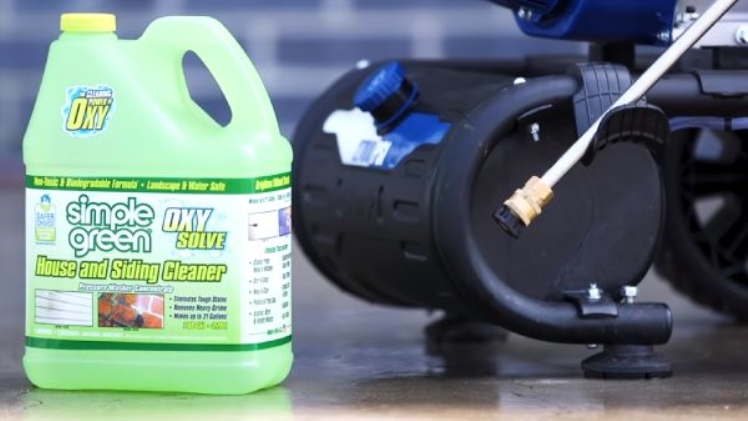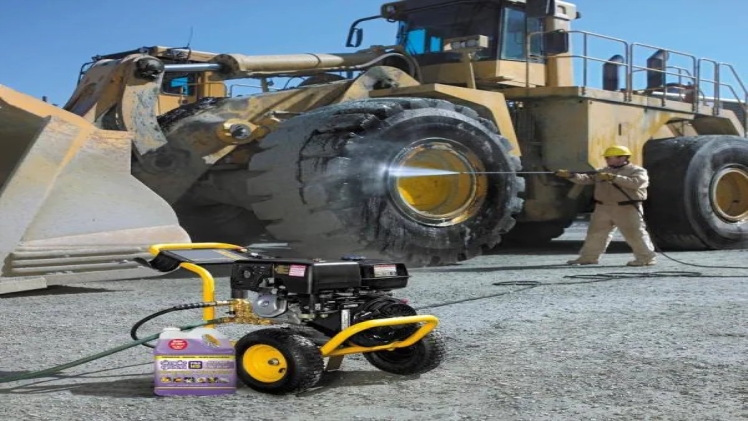A Powerful Cleaning Combination – Pressure Washer with Soap
In terms of eradicating thick dirt, molds, mildew, and other hard-to-clean substances, using a pressure washer is no doubt one of the most efficient ways to do so. Nowadays, cleaning technology has become innovative and easy because of the increase of powerful cleaning tools.
However, when it comes to a much deeper cleaning, using a pressure washer alone may not be enough. So you might think of incorporating it with soap or detergent. Pressure washers with detergent tanks are adept for deep cleaning.
What kind of cleaning agent will you use for pressure washing? In general, you can use pressure washer detergents or simply an all-purpose detergent. On the other hand, if you want to achieve great results, you can use a detergent that’s specifically made for a particular task.
For example, if you want to pressure-wash your deck or fence, there are available detergents in the market that are solely designed to erase grass stains from wood material. There are also detergents that are made to remove algae from a boat.
There’s also a particular type of detergent that’s specially composed to clean your car and eliminate road dirt without ruining the car paint. There are also types of cleaners that have extra power in terms of removing oil stains left on your garage.
So, the soap or detergents you’re going to use will mostly depend on the surface or object you’re about to clean.
Nonetheless, how can you efficiently use a pressure washer along with the strength of soap? Let’s talk about the steps on how you can do that.
Step #1: Prepare your Pressure Washer and the Cleaning Area

Ascertain that the area, object, or surface you’re about to clean is prepared. If there are plants, vases, or any vulnerable and fragile objects around, temporarily remove or cover them so they won’t get in contact with the pressurized water and soap.
Step #2: Prepare your Pressure Washer and the Cleaning Area

What you’ll do before operating your pressure washer with a cleaning solution is first wash the object, area, or surface with hot water. The hot water will be responsible for softening and loosening the thick dirt and grime.
Therefore, pressure washing them would be much easier for you to do. Just be careful to not let the heated water touch your skin.
Step #3: Prepare the canister and put soap or detergent in it

Most pressure washers include a tank or canister designed to carry soap or detergents. But if your pressure washer doesn’t have one, you can buy a big canister or get a bucket and hose with a heavy strainer on the other end. This will help transfer the soap from the canister into the pressure washer.
If your pressure-washing machine has its built-in tank, ascertain that you’ll load it with your chosen soap or detergent. Using an extension is not needed. Moreover, ensure that the hose with strainer touches the tank’s bottom. Connect the hose’s other end to the water inlet-valve.
On the other hand, if you wish to clean your yard with a pressure washer but you have plenty of plants around it, you can depend on using a plant-safe detergent. Just combine seven parts of water and 3 parts of white vinegar and put the mixture inside your detergent canister. This mixture works in eradicating molds and mildew but it won’t ruin your plants.
When doing this step, it is also advisable for you to check first your pressure washer’s instruction guide or manual to ascertain that you’re doing it correctly.
Step #4: Ascertain that the nozzle is in the correct setting

The soap nozzles in pressure washers are designed for more efficient and rigorous cleaning and better soap application. It can normally be adjusted from a low to a high-pressure setting. To know the right setting, read the pressure washer’s instruction manual.
However, most commonly, you can try putting the setting first to low-pressure mode. If you notice that it isn’t enough for eliminating the thick dirt, then you can gradually adjust the nozzle and the pressure until you see a good and solid forming of soap bubbles
Step #5: Start from pressure washing the bottom upwards

If you’re cleaning an object or an area, make sure to pressure-wash it from the bottom or base, then upwards. Do not point the wand randomly. Ensure that you won’t leave some areas or parts unwashed.
Step #6: Let the soap or detergent sit on the surface for a few minutes

Leaving the soap or detergent on the whole surface will help in loosening the stains and dirt. Do not rinse it right away with water after putting the detergent or soap. However, you must avoid leaving it for more than 30 minutes as this will leave unwanted marks and damages on the surface.
Step #7: Get the hose out of the tank and rinse the surface with pure water

Pull out the nozzle to drain the soap. Set the pressure washer into high-pressure mode then cleanse the area or object you’re cleaning with pure water. Ascertain that there are no detergent or soap marks left behind. After that, let the surface dry completely.

